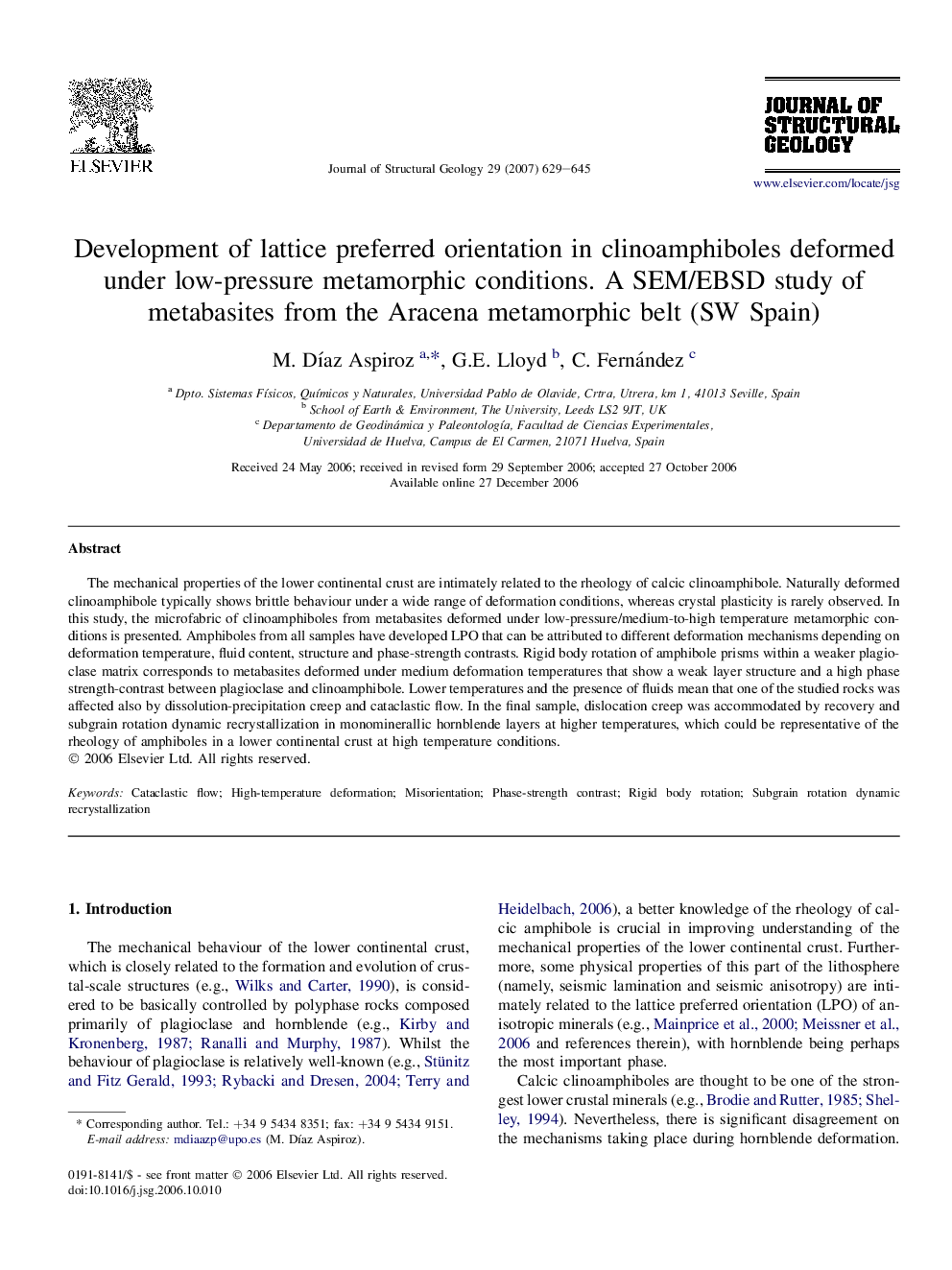| Article ID | Journal | Published Year | Pages | File Type |
|---|---|---|---|---|
| 4734406 | Journal of Structural Geology | 2007 | 17 Pages |
The mechanical properties of the lower continental crust are intimately related to the rheology of calcic clinoamphibole. Naturally deformed clinoamphibole typically shows brittle behaviour under a wide range of deformation conditions, whereas crystal plasticity is rarely observed. In this study, the microfabric of clinoamphiboles from metabasites deformed under low-pressure/medium-to-high temperature metamorphic conditions is presented. Amphiboles from all samples have developed LPO that can be attributed to different deformation mechanisms depending on deformation temperature, fluid content, structure and phase-strength contrasts. Rigid body rotation of amphibole prisms within a weaker plagioclase matrix corresponds to metabasites deformed under medium deformation temperatures that show a weak layer structure and a high phase strength-contrast between plagioclase and clinoamphibole. Lower temperatures and the presence of fluids mean that one of the studied rocks was affected also by dissolution-precipitation creep and cataclastic flow. In the final sample, dislocation creep was accommodated by recovery and subgrain rotation dynamic recrystallization in monominerallic hornblende layers at higher temperatures, which could be representative of the rheology of amphiboles in a lower continental crust at high temperature conditions.
